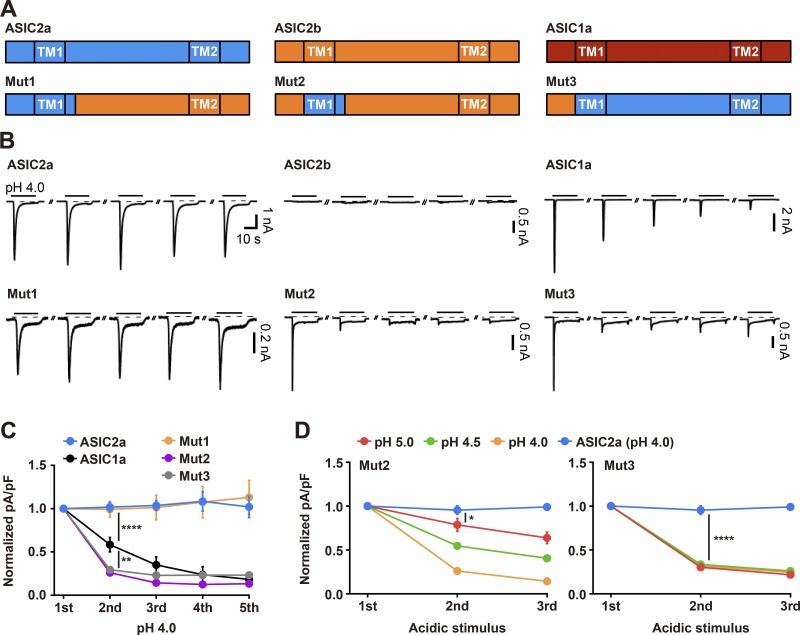Figure 1.
Absence of the N terminus of ASIC2a causes de novo prolonged desensitization of the ion channel in response to repetitive exposure to extracellular protons. (A) Schematic showing ASICs and their chimeric mutants used in this study. (B) Currents elicited by pH 4.0 for 20 s (as indicated with black lines above traces) in HEK293T cells expressing either a wild-type ASIC or a chimeric mutant. Acidic stimuli were delivered by switching the bath solution from pH 7.4 to pH 4.0 at 2-min intervals. The dashed line indicates the zero-current level. (C) Peak current densities elicited by five successive applications of pH 4.0, normalized to those evoked by the initial stimulus. Note that ASIC2a chimeras missing the N terminus of ASIC2a (Mut2 and Mut3) exhibit a significant reduction in peak currents upon response to repeated acidic stimuli. n = 6–11 for each group. (D) Peak current densities elicited by three successive treatments with protons (pH 4.0, 4.5, or 5.0), normalized to those evoked by the initial stimulus. n = 6–8 for each group. *, P < 0.05; **, P < 0.01; ****, P < 0.0001, two-way ANOVA followed by Tukey’s multiple comparisons corrections.

